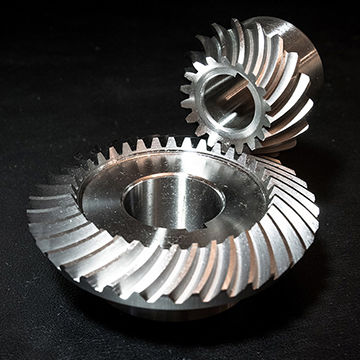Product Description
Product Description
We has been providing genuine and high quality starters at the lowest possible cost in China, and got a high reputation from our clients due to the reliable quality, competitive price and on-time delivery.
1.Durable and high Quality.
2.Nice-looking packing.
3.Prompt delivery.
4.Wide range of parts for more models available.
5.Most competitive wholesale prices.
6.One stop buying service provided.
| car brand | made in China |
| engine type | Diesel engines |
| car model | universal |
| Material | casting |
| type | Machinery |
| installation method | direct installation |
| Scope of application | standard |
| effect | internal combustion engine |
| trademark | OEM |
| ordering method | customized |
| order cycle | 2-5day |
| ignition method | Compression ignition |
| product quality | high quality |
| main market | africa asia |
| Main models | universal |
Product Recommended
Company Profile
Packaging & Shipping
FAQ
1. Is this product new?
All our products are brand new and original, so each product can be strictly tested, please rest assured to buy.
2. Do you offer custom designs?
Custom design is support for customization. We have very rich experience in product customization.
3. Delivery time?
It can be shipped on the same day, special models need to be customized by the factory, we will ship within 15-30 days, without affecting the delivery time. If you have any questions or concerns, please contact us directly for assistance.
4. How to clean the injector?
(1) Remove the injector from the engine;
(2) Connect the carburetor to clean the fuel tank and the fuel injector with a special connector;
(3) Inject the carburetor cleaner into the fuel injector, and check whether the fuel injector leaks when it is not powered on;
(4) Intermittently energize the electromagnetic coil of the fuel injector, let the carburetor cleaner clean the fuel injector, and observe its spray atomization at the same time.
5. How to test the injector?
Detect dripping water from the injector. Select the connector of the tester according to the fuel injector model and connect it well, then check the sealing O-ring group (replace if found damaged), install the fuel injector on the test stand, press the fuel pump button, and adjust the pressure to the vehicle under test Factory specified pressure (preferably higher than 10%), observe whether the injector drips oil. If the leakage is more than 1 drop within 1min (or according to the technical standard), replace the fuel injector.
/* January 22, 2571 19:08:37 */!function(){function s(e,r){var a,o={};try{e&&e.split(“,”).forEach(function(e,t){e&&(a=e.match(/(.*?):(.*)$/))&&1
| Application: | Motor, Electric Cars, Motorcycle, Machinery, Marine, Agricultural Machinery, Car |
|---|---|
| Function: | Distribution Power, Clutch, Change Drive Torque, Change Drive Direction, Speed Changing, Speed Reduction, Speed Increase |
| Layout: | Three-Ring |
| Hardness: | Soft Tooth Surface |
| Installation: | Torque Arm Type |
| Step: | Stepless |

How does a crown gear contribute to the overall efficiency of a system?
A crown gear plays a significant role in enhancing the overall efficiency of a system. Let’s explore how a crown gear contributes to system efficiency:
- Power Transmission:
Crown gears efficiently transmit power between two intersecting shafts. By meshing with other gears in the system, the crown gear transfers rotational energy from the input shaft to the output shaft. The precise design and tooth profile of the crown gear ensure minimal energy losses during power transmission, resulting in high overall system efficiency.
- Reduced Friction and Wear:
Crown gears are designed to minimize friction and wear. The tooth engagement between crown gears and other meshing gears is smooth due to their curved tooth profile. This reduces frictional losses and wear on the gear teeth, resulting in improved efficiency and longevity of the gear system. Additionally, crown gears distribute the load evenly across the gear teeth, minimizing localized stress concentrations and reducing the risk of premature failure.
- Backlash Reduction:
Crown gears are effective in reducing or eliminating backlash, which is the slight clearance between the teeth of meshing gears. Backlash can cause inefficient power transmission and affect the accuracy of motion in a system. The tooth orientation and engagement properties of crown gears help minimize backlash, ensuring a tighter meshing with other gears. This reduces energy losses and improves the overall efficiency and precision of the system.
- High Gear Ratios:
Crown gears can achieve high gear ratios due to their larger diameter and the increased number of teeth engaged with other gears. High gear ratios allow for precise speed reduction or torque multiplication, enabling the system to operate more efficiently. By optimizing the gear ratio, a crown gear contributes to the efficient conversion of input power into the desired output performance.
- Versatility:
Crown gears offer versatility in different applications and system configurations. Their bidirectional capability allows them to handle variations in rotational direction without compromising efficiency. The ability to accommodate changes in rotational direction makes crown gears adaptable to a wide range of systems, contributing to overall system efficiency.
In summary, a crown gear enhances the overall efficiency of a system through efficient power transmission, reduced friction and wear, backlash reduction, high gear ratios, and versatility. By minimizing energy losses, optimizing gear engagement, and ensuring reliable power transfer, a crown gear plays a vital role in maximizing the efficiency and performance of the system it is employed in.

What are the challenges in designing and manufacturing crown gears?
The design and manufacturing of crown gears come with certain challenges that engineers and manufacturers need to address. Let’s explore the challenges involved in designing and manufacturing crown gears:
- Complex Tooth Geometry:
Crown gears have a complex tooth geometry compared to other gear types. The curved shape of the teeth requires precise calculations and design considerations to ensure proper meshing and optimal performance. Designing and modeling these intricate tooth profiles can be challenging, requiring advanced software tools and expertise.
- Manufacturing Tolerances:
Manufacturing crown gears with tight tolerances is crucial to achieve smooth and accurate meshing with other gears. The curved tooth profile and perpendicular orientation require precise machining or gear cutting processes. Maintaining the necessary tolerances throughout the manufacturing process can be challenging and may require specialized equipment or techniques.
- Noise and Vibration:
Due to the complex tooth geometry and meshing characteristics, crown gears can generate noise and vibration during operation. Ensuring quiet and vibration-free performance is essential, especially in applications where noise reduction is critical. Designing and manufacturing crown gears with appropriate tooth profiles, surface finishes, and gear materials can help mitigate noise and vibration issues.
- Stress Concentrations:
Crown gears are susceptible to stress concentrations at the tooth root and fillet areas. The high contact stresses occurring during meshing can lead to premature tooth failure or wear. Designing proper fillet radii, optimizing tooth profiles, and selecting suitable materials and heat treatments are important considerations to minimize stress concentrations and enhance gear strength and durability.
- Heat Treatment and Surface Hardening:
Achieving the desired surface hardness and wear resistance of crown gears can be challenging. Heat treatment processes, such as carburizing or induction hardening, need to be carefully controlled to ensure uniform hardness distribution and avoid distortion. Balancing the gear’s core toughness with the surface hardness is critical to maintain gear integrity and performance.
- Lubrication and Maintenance:
Crown gears require proper lubrication to reduce friction, wear, and heat generation during operation. Designing gear systems with adequate lubrication mechanisms, such as oil baths or forced lubrication, is crucial. Additionally, considering maintenance requirements, such as accessibility for lubrication and gear inspection, is important to ensure the long-term performance and reliability of crown gears.
In summary, designing and manufacturing crown gears present challenges related to complex tooth geometry, manufacturing tolerances, noise and vibration, stress concentrations, heat treatment, surface hardening, lubrication, and maintenance. Overcoming these challenges requires careful design considerations, precise manufacturing processes, and suitable material selection to ensure the optimal performance, durability, and reliability of crown gears in gear systems.

What is a crown gear and how is it used in mechanical systems?
A crown gear, also known as a contrate gear or a contrate wheel, is a type of gear that has teeth positioned perpendicular to the gear’s face. It is primarily used in mechanical systems for specific applications. Let’s explore the characteristics and uses of crown gears:
- Gear Geometry:
A crown gear has teeth that are shaped like segments of a cylinder. Unlike other gears, such as spur gears or bevel gears, the teeth of a crown gear are not parallel to the gear’s axis but lie perpendicular to its face. This unique geometry allows for specific functionality in mechanical systems.
- Meshing with Other Gears:
Crown gears are often used in conjunction with other gears in mechanical systems. They can mesh with gears that have parallel axes or bevel gears with intersecting axes. The crown gear’s perpendicular tooth orientation enables it to mesh smoothly with these different gear types, transferring torque and rotational motion between them.
- Directional Change:
One of the primary uses of crown gears is to change the direction of rotation in a mechanical system. By meshing a crown gear with other gears, the rotational motion can be redirected by 90 degrees. This directional change is useful in various applications where a change in motion direction is required, such as in conveyors, cranes, and other machinery.
- Force Distribution:
Crown gears can also be used to distribute forces and torques in mechanical systems. By meshing a crown gear with other gears, the load can be spread across a larger contact area. This distribution of forces helps to reduce stress and wear on individual gear teeth, promoting smoother operation and improved durability of the gear system.
- Steering Mechanisms:
Crown gears are commonly employed in steering mechanisms, particularly in automotive applications. They are used in rack and pinion systems, where the crown gear meshes with a rack (a linear toothed component) to convert rotational motion into linear motion. This arrangement allows for precise control and smooth movement in steering systems.
- Automation and Robotics:
Crown gears can also be found in automation and robotics, where they are utilized in various motion control mechanisms. They enable changes in motion direction, force distribution, and precise control in robotic arms, gantry systems, and other automated equipment.
In summary, a crown gear is a specialized type of gear with teeth perpendicular to its face. It is used in mechanical systems to change the direction of rotation, distribute forces, and enable precise motion control. Crown gears find applications in a wide range of industries, including automotive, manufacturing, automation, and robotics.


editor by CX 2024-04-09